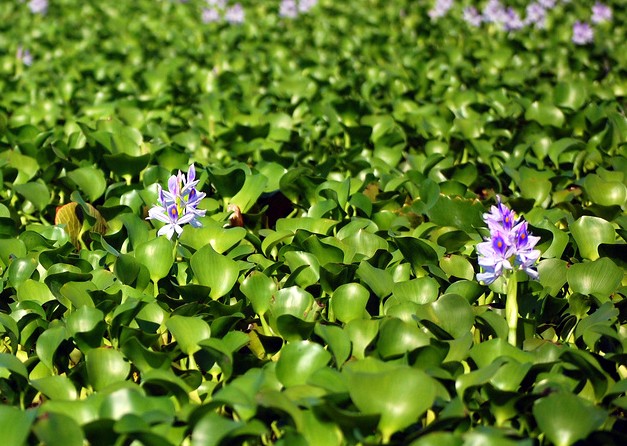Water hyacinth project turns nuisance plant into potential source of biogas
It is a free-floating perennial aquatic plant native to tropical South America. With broad, thick, glossy, ovate leaves, it may rise up to a meter above the surface of the water. It has long, spongy and bulbous stalks.
Experts call the it water hyacinth, known in the science world as Eichornia crassipes. Water hyacinth is considered the most productive plant on earth as it yields more than 200 tons of dry matter per hectare per year under normal conditions. On water containing high concentrations of sewage, it yields up to 657 tons of dry matter per hectare.
In Dianchi Lake in Kunming City, the provincial capital of China’s Yunnan Province, water hyacinth is considered a nuisance plant thanks to the lake's polluted water. “The plant grows particularly fast in polluted water,” said Dr. Zanwin Wang, associate professor at the School of Development Studies in Yunnan University.
“The growth of water hyacinth is one of the lake’s biggest problems,” said a paper circulated during the annual conference convened by the Economy and Environment Program for Southeast Asia (EEPSEA) in Phuket, Thailand, which opened Monday.
Currently, there are several popular methods for preventing the spread of, or eradicating the water hyacinth: biological, chemical and physical control.
Each has its benefits and drawbacks. Chemical control is the least favored due the unknown long-term effects on the environment and the communities with which it comes into contact.
Physical removal method, however, is costly and generally not economically feasible. If it is disposed of in a landfill, water hyacinth can generate methane and carbon dioxide. These gases will eventually enter the atmosphere and can contribute to climate change.

But there is a better way to effectively control water hyacinth: Using them for biogas.
To find out whether biogas is really feasible, the EEPSEA supported a study that assessed a proposed biogas project using the water hyacinth. The study wanted to find out whether biogas is a cost-effective method to control the noxious weed, help clean up water pollution, and generate a source of renewable energy.
“Compared with the current water hyacinth control method, the use of water hyacinth to produce biogas has two major advantages,” said Dr. Wang, who headed the study. For one, the biomass of water hyacinth is used rather than disposed of as a waste. For another, the emission of landfill gas is avoided.
The proposed biogas plant, which will cost around 13.52 million Yuan (around $2.1 million) to construct and operate, will have an annual output of around 245,438 liters of biogas with an estimated value of 602,941 Yuan (around $96,668).
The plant is expected to produce organic fertilizer with an estimated value of 210,000 Yuan ($33,668) a year. The total value of marketable products (that is, biogas and organic fertilizer) will account for 36.2 percent of the total direct benefits produced by the plant.
Its operation will also produce water quality improvements worth 1,332.58 Yuan ($213.56) a year. All these benefits will account for 59.3% of its total direct benefits.
“The inclusion of the economic value of its contribution to environmental improvement, the production of biogas using water hyacinth is economically feasible,” Wang pointed out.
In particular, the government can spend less on the control of water hyacinth’s expansion as water hyacinth is used as a raw material of biogas. Currently, the government pays 104.8 Yuan ($16.80) per ton for the collection and disposal of water hyacinth. In comparison, it only spends 66.8 Yuan ($10.71) per ton for using water hyacinth in producing biogas.
Due to its improved environmental and economic performance in controlling the expansion of water hyacinth, the use of water hyacinth in biogas production “can be a potential option to respond to policies on water pollution control, renewable energy development, and carbon emission reduction,” the study pointed out. — JDS, GMA News




